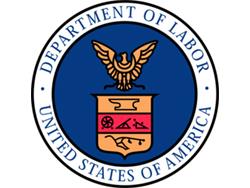October Inflation Shows Signs of Easing
Washington, DC, November 10, 2022-The Consumer Price Index for All Urban Consumers (CPI-U) rose 0.4% in October on a seasonally adjusted basis, the same increase as in September, the U.S. Bureau of Labor Statistics reported.
Over the last 12 months, the all items index increased 7.7% before seasonal adjustment.
The index for shelter contributed over half of the monthly all items increase, with the indexes for gasoline and food also increasing. The energy index increased 1.8% over the month as the gasoline index and the electricity index rose, but the natural gas index decreased. The food index increased 0.6% over the month with the food at home index rising 0.4%.
“Inflation eased in October as underlying price increases excluding energy and food slowed from a four-decade high,” reports the Wall Street Journal.
“The Labor Department on Thursday said that its consumer-price index increased 7.7% in October from the same month a year ago, the smallest 12-month increase since January 2022. The reading was down from 8.2% in September. June’s 9.1% inflation rate was the highest in four decades.
“On a monthly basis, the CPI rose 0.4% in October from September, the same pace as the previous month. The CPI measures what consumers pay for goods and services.
“The so-called core CPI-which excludes volatile energy and food prices-climbed 6.3% in October from a year earlier, down from 6.6% in September, which was the biggest increase since August 1982.
“Investors and policy makers watch core readings closely as a reflection of broad price pressures and as a predictor of future inflation. On a monthly basis, the core CPI rose 0.3% in October, down sharply from 0.6% in September and August.
“The October inflation report could keep Federal Reserve officials on track to approve a half-percentage-point interest-rate increase next month and to pencil in slightly higher rates next year than they had anticipated previously.
“Inflation surged last year as the U.S. economy rebounded from the Covid-19 pandemic. Prices jumped as strong consumer spending-fueled by very low interest rates and government stimulus-collided with jammed supply chains and pandemic-related shortages. Russia’s war with Ukraine this year further stoked inflation worldwide, driving up prices for food, energy and other commodities.
“Price pressures have remained stubbornly high in large part because they have spread increasingly from goods to more labor-intensive services-such as shelter, medical care and car insurance-where inflationary momentum tends to be slow to reverse once it gets going.”
